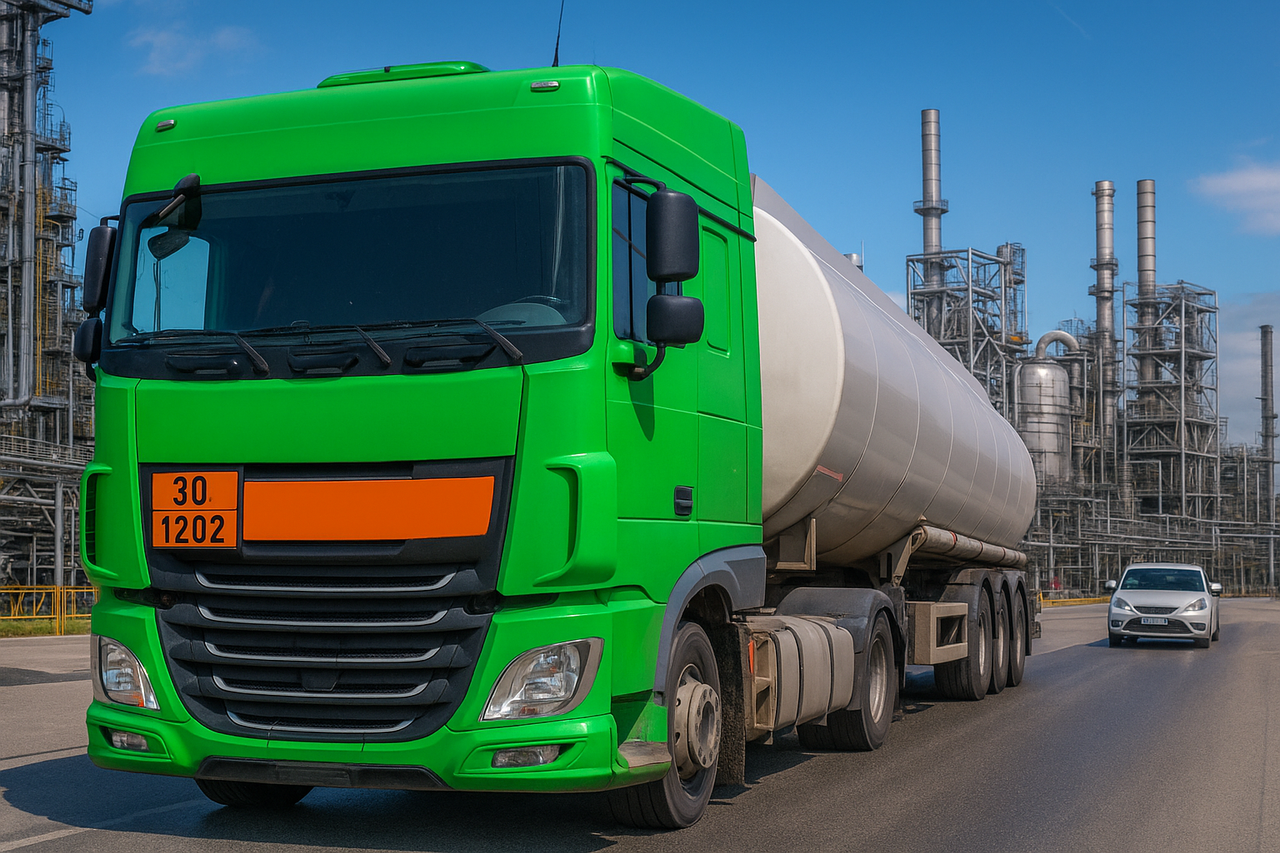
Understanding Section 14 of the Safety Data Sheet
Most people think of transport classification as a label you slap on a drum before it hits the road.
But for a SHEQ manager, Section 14 of the SDS is much more than that. It’s the bridge between product safety, logistics compliance, and emergency preparedness, and it’s often misunderstood, even by experienced professionals.
Section 14 of the Safety Data Sheet aligns chemical safety information with the rules of dangerous goods transport.
It translates what we know about the product’s hazards into the formats defined by:
Each of these systems has its own nuances, and Section 14 provides the common ground.
In short, it tells you how to legally move the product, under what conditions, and what to do if something goes wrong.
Section 14 normally includes the following elements. Understanding how they fit together makes you a much stronger partner for logistics, warehousing, and emergency teams.
The UN number is the universal identifier for dangerous goods, a four-digit code that defines what’s inside.
Examples:
A single UN number can represent many similar mixtures if they share comparable hazards.
Choosing the right one requires analyzing the product’s physical state, main hazard, and composition thresholds.
This is the standardized name that appears on shipping papers, packages, and vehicle placards.
It must exactly match the official entry in the transport regulations (for example, “Paint” or “Adhesive containing flammable liquid”).
Manufacturers often add a technical name in parentheses for clarification, e.g. UN 3082, Environmentally hazardous substance, liquid, n.o.s. (contains bisphenol-A epoxy resin).
Each dangerous good belongs to a class (1–9) depending on its main risk.
Examples:
Some classes are divided into divisions (for example, 4.1 flammable solids, 4.2 self-heating substances).
Knowing the class is key for labeling, segregation, and emergency response.
The Packing Group (PG) indicates the degree of danger within a class:
It drives packaging requirements, testing standards, and sometimes transportation restrictions.
PG isn’t based solely on hazard classification, it’s often derived from test data, like flash point, corrosivity, or acute toxicity.
Transport rules consider aquatic toxicity separately from workplace safety.
If a product meets Aquatic Chronic 2 or worse under CLP, it may also be classified as “Marine Pollutant” or “Environmentally hazardous substance” in transport.
This affects labeling (fish-and-tree symbol) and sometimes limited quantity exemptions.
Transport regulations include hundreds of special provisions, coded entries (for example, 274, 640C, A97) that modify how a substance must be handled.
Examples:
Understanding these nuances helps optimize shipping without compromising safety.
A common question:
“Why does my SDS say Class 3 under ADR, but a different entry under IATA?”
That’s not an error, it’s a reflection of how each mode handles risk and containment differently.
So, a mixture that can travel freely by road may be forbidden by air or need different packaging at sea.
Mixtures rarely behave like their pure components.
Even if each ingredient has a known UN number, the final product’s flash point, viscosity, or toxicity can shift classification entirely.
For example:
Never assume that a mixture inherits the transport class of its main component.
Each formulation must be tested or calculated according to the relevant criteria, otherwise, packaging and labeling could be wrong.
Classification defines what you transport, packaging defines how.
And for SHEQ managers, understanding the packaging hierarchy is key to both safety and efficiency.
Dangerous goods are often packed in composite systems, for instance, bottles (inner packaging) inside a drum or box (outer packaging).
Each component must meet UN performance tests (drop, leakproofness, pressure).
Drums are the workhorses of chemical logistics.
They come in steel, plastic, or fiberboard variants, each marked with a UN approval code (for example, 1A1, 1H1).
The code tells you:
Using the wrong type or reusing damaged drums invalidates certification and exposes you legally if a spill occurs.
IBCs (codes like 31H1 or 31A) are efficient but come with limitations:
For large shipments, like tank containers or flexitanks, ADR and IMDG impose extra requirements: venting, grounding, emergency shut-off valves, and segregation.
Class 3 flammables, for example, need dedicated container ventilation and exclusion zones from oxidizers or gases.
What leaves your facility might not be what the end-user receives.
Re-packaging or diluting products for downstream customers can alter flash points and hazard classes, triggering new transport classifications.
SHEQ managers should ensure packaging changes trigger a re-evaluation of Section 14 data.
Packaging, in short, is where safety, compliance, and practicality meet. The most beautiful SDS in the world won’t save you from a leaking drum on the highway.
For SHEQ professionals, Section 14 data influences far more than shipment paperwork.
Ensures carriers, warehouses, and freight forwarders apply correct ADR, IMDG, or IATA rules, preventing costly delays or rejected shipments.
Defines how goods are stored together. ADR classes identify incompatible combinations, for example, flammable liquids separate from oxidizers.
UN numbers and classes dictate what fire services, first responders, or spill teams must know. Information feeds into transport emergency cards (TREMcards) and response procedures.
Medium-experienced SHEQ managers often discover that different suppliers provide different Section 14 data for the same substance.
That’s because transport classification isn’t globally harmonized.
This inconsistency complicates logistics automation and compliance tracking, one more reason structured SDS data is essential.
At NextSDS, we go beyond what’s printed in Section 14.
Our platform automatically extracts UN numbers, classes, packing groups, and packaging details from SDS documents, and cross-checks them with our curated global transport regulation database.
That means you can:
For SHEQ teams, this turns static SDS text into dynamic, actionable transport intelligence.
✅ Section 14 isn’t just about moving drums safely, it’s about connecting the dots between product data, packaging, logistics, and emergency readiness.
With NextSDS, you can trust that every shipment is backed by accurate, harmonized, and regulation-compliant transport data.
👉 Want to know how NextSDS can help you automate transport classification, packaging validation, and reduce shipment risks? Get in touch with us.